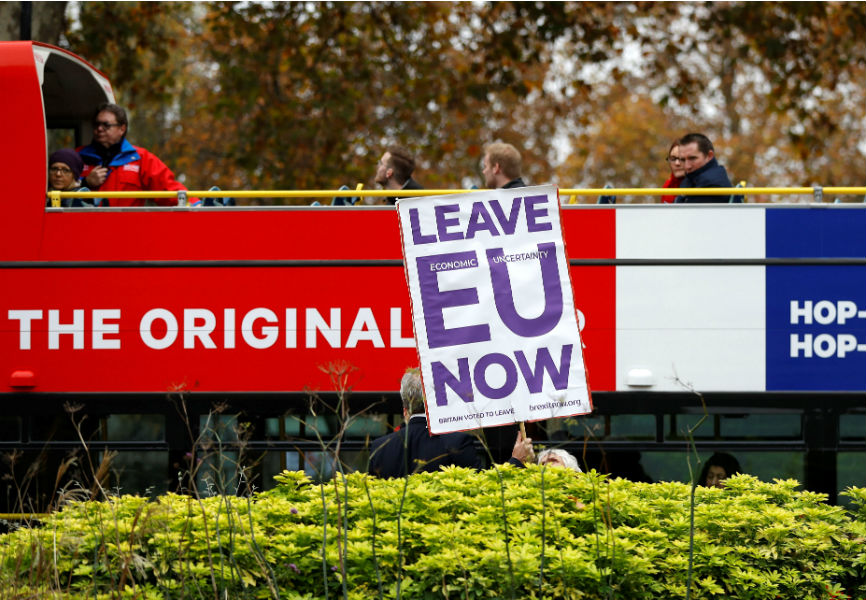Prime Minister Theresa May's long-awaited agreement with the EU to withdraw her country from the 28-nation bloc has received a hostile reception from UK lawmakers. Two cabinet ministers have resigned, including Dominic Raab, who had been leading negotiations with the EU, and calls for May herself to step down have grown louder. Eurasia Group expert
Mujtaba Rahman lays out the likely next steps in the high-stakes process.
No-confidence vote
May's critics—primarily advocates of a cleaner break from the EU than that proposed by May—claim that 50 members of parliament have called for a vote of no confidence in her as party leader. The threshold to trigger a vote is 48, equal to 15% of the 315 Conservative Party lawmakers. There has been no confirmation that the threshold has been crossed, but it is probable that a vote will be held, as early as this week. Still, there is a much higher bar to force May to resign as party leader and prime minister: more than 50% of all votes cast. If reached, a Conservative Party leadership election would then take place and the EU exit process put on hold. A more likely scenario at this point is that May would win, though the vote would be close. Following this, she could not be challenged again as party leader for another 12 months.
Vote on withdrawal agreement
But even if May keeps her job, the attempt to oust her will likely harden opposition to her deal with the EU in the House of Commons. Most of the criticisms center on the solution offered to the thorny issue of what to do about the border between Ireland, an EU member, and Northern Ireland, which is part of the UK. In order to avoid instituting new border controls—a prospect that evokes painful memories of the sectarian violence that racked Northern Ireland for decades—May's agreement would keep the UK in a European customs union for the foreseeable future. In other words, the country would pay a large divorce bill and be bound by many EU rules and regulations without having any say in the making of them. Given the breadth of criticism of the deal—from hardline Brexiteers, pro-EU Conservative lawmakers, members of the Democratic Unionist Party that supports the government in parliament, and the opposition Labour Party—it seems unlikely to pass in its current form.
What then?
The Article 50 withdrawal process is scheduled to end 29 March 2019, so time is running out. EU officials have so far been coy about the possibility of making tweaks to the withdrawal agreement to make it more palatable for UK lawmakers, though that it is probably because they do not want to hold out hope for a better deal that could lead to a rejection of the one on offer. But some changes on the margins are possible, which would probably be sufficient to get the deal across the finish line in a second House of Commons vote, given the lack of any good alternatives. Nobody wants a so-called cliff edge Brexit in which tariffs between the UK and EU would return to higher WTO levels and cause huge economic disruption. If parliament were to reject a revised withdrawal agreement, the most likely scenario is that authorities would call a new referendum to ask the British public if it really wants to go forward with Brexit, after two years of failed, contentious negotiations.
SUBSCRIBE TO GZERO DAILY
Sign up now for GZERO Daily, the newsletter for anyone interested in global politics, published by GZERO Media.
Mujtaba (Mij) Rahman leads the firm's analysis on Europe, helping clients navigate elections, Brexit, EU-Turkey dynamics, bailout politics in Greece, European Central Bank politics and policy and EU sanctions policy against Russia, to name a few recent issues.

 A pro-Brexit campaigner holds a placard as a tourist bus passes by in Westminster London, Britain, November 16, 2018. REUTERS/Peter Nicholls
A pro-Brexit campaigner holds a placard as a tourist bus passes by in Westminster London, Britain, November 16, 2018. REUTERS/Peter Nicholls